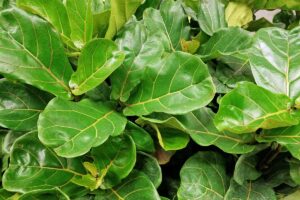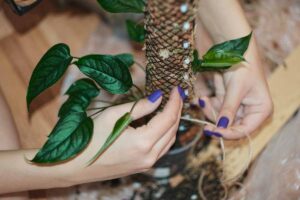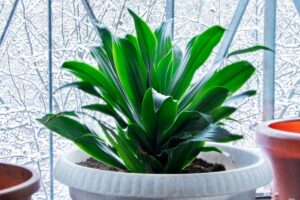I totally get why monsteras are so popular. Who wouldn’t totally fall for a plant that isn’t going to disappoint you, by gradually turning into a limp heap of foliage in a pot?
But minimal care requirements alone don’t quite cut it. You also have to be beautiful to make it in the houseplant world.
And Swiss cheese plants have that covered with no problem – the foliage makes you feel like you’re living in a dreamy tropical forest somewhere remote and peaceful.
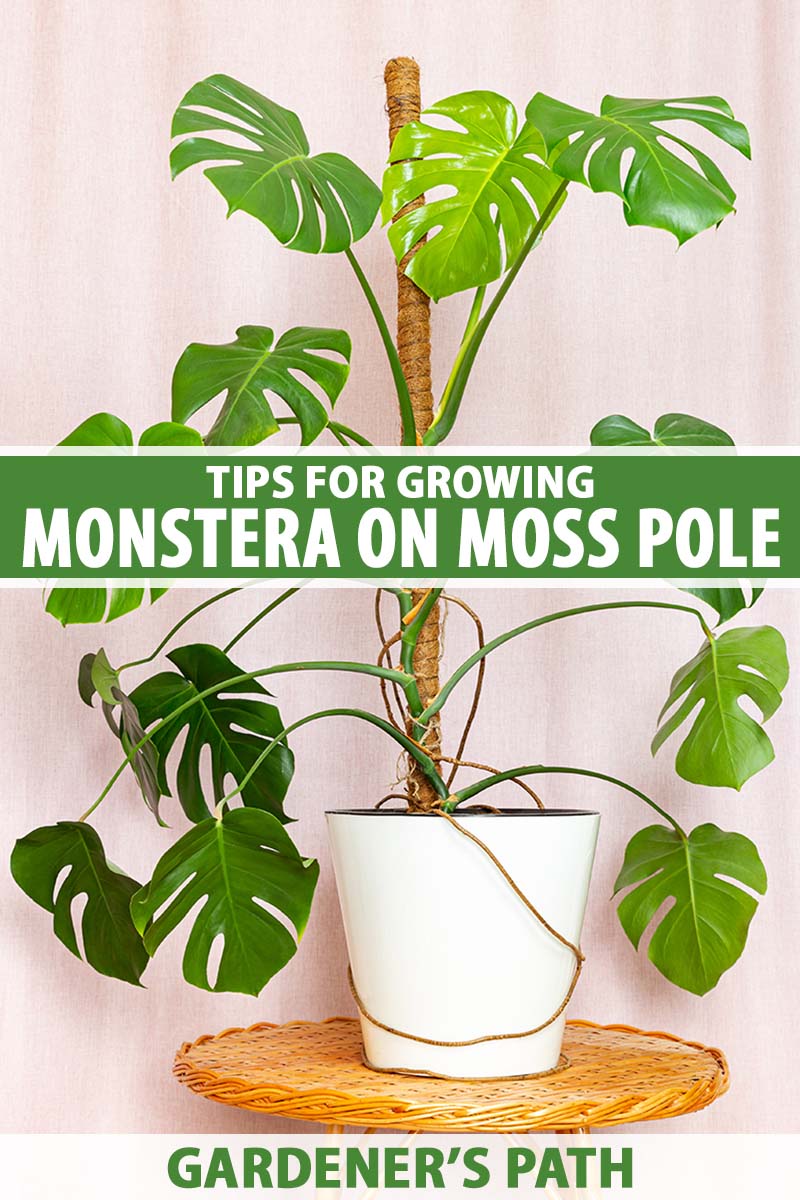
We link to vendors to help you find relevant products. If you buy from one of our links, we may earn a commission.
Now, having sung the praises of this gem, I’ve noticed that it isn’t always grown to its fullest potential.
There are times when it looks downright sad, falling over the edges of pots and tangling up in a big mess.
Do you know what fixes that? Moss poles.
If you want your monstera to look as good and grow as vibrantly as possible, a moss pole isn’t just a luxury, it’s a necessity.
Here are all the details on the how and why to use these unique houseplant-growing tools:
What You’ll Learn
Monsteras are super easy to grow on a support structure. In fact, it’s better for them.
I know you often see them growing in an upright habit, but as they grow larger, you’ll find that these are actually vining plants.
They’ll start to look unruly and floppy without something to climb up.

These vining epiphytes have aerial roots that come out of the stem above the soil level, and these are just looking for a place to hook on to.
If you don’t have a structure available for them to grow on, these roots will just kind of hang out, doing their thing.
But we can improve upon that, and help Swiss cheese plants to thrive. A moss pole kind of acts like a trellis for these indoor specimens.
What Is a Moss Pole?
A moss pole is exactly what it sounds like. It’s a solid structure covered in moss, usually sphagnum moss, that gardeners use to grow their plants upwards rather than out.
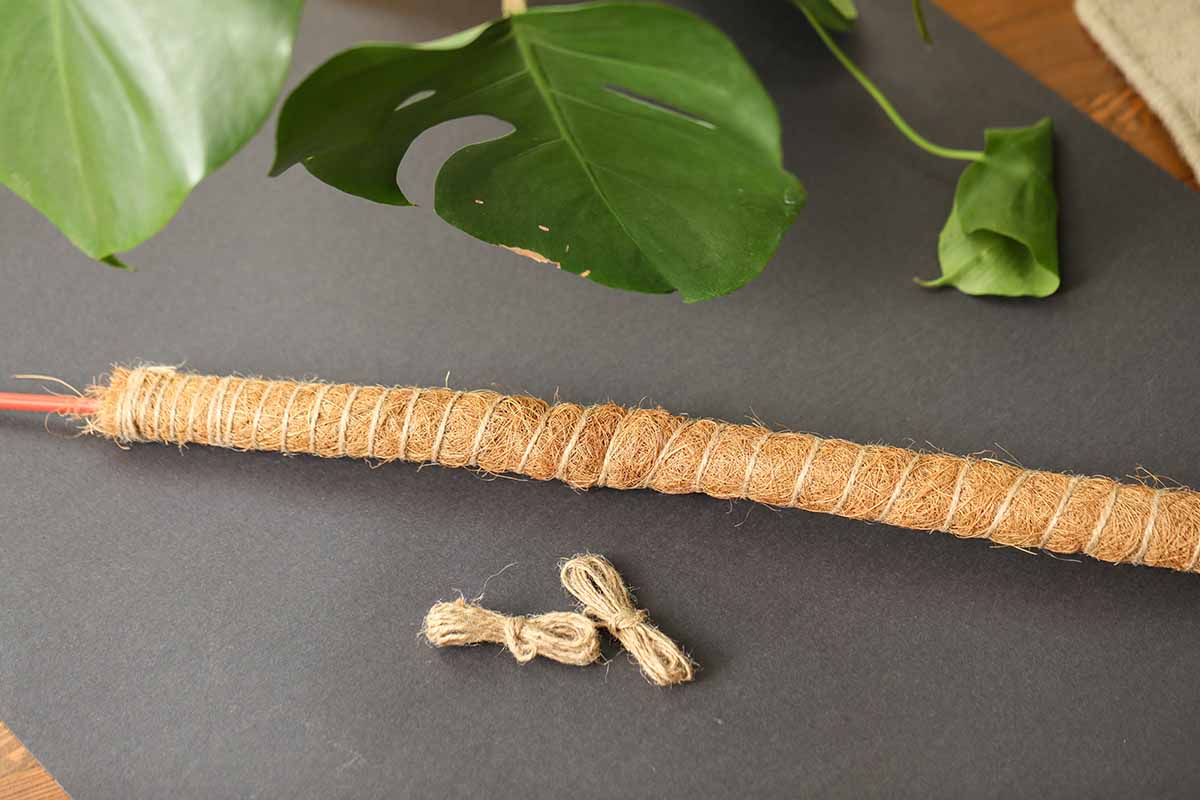
Some of these are bendable so you can create interesting shapes, and others are solid.

Most have a smaller piece at the bottom to insert into the soil, and they come in a range of diameters and heights.
Benefits of Moss Poles
Monsteras are epiphytes, which are plants that grow in the nooks and branches of trees and bushes.
To be more specific, they are vining epiphytes, so they climb up and along stems and branches of other plants in the wild.
They aren’t parasites, obtaining their water and nutrients from the air and dirt that collects around them instead of from their hosts.
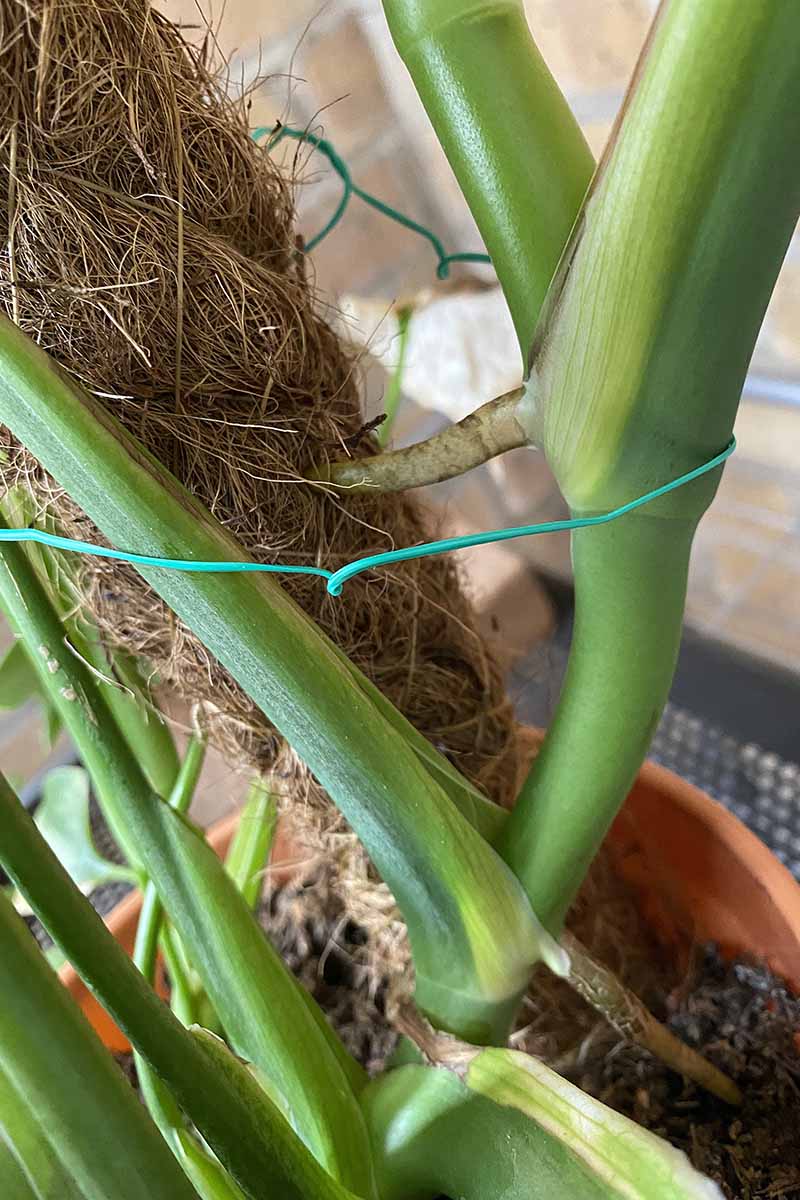
This kind of support structure somewhat recreates the natural environment that they prefer, giving the plant a place to anchor those aerial roots and climb away. It also provides an additional source of nutrients and moisture.
Using one usually results in a healthier specimen. And a healthier monstera produces larger leaves and more fenestration, which we love – right?
Plus, it just looks tidier. Monsteras can start to look unruly if you don’t give them something to climb.
You don’t need to provide a moss pole for young plants. They don’t need it.
You can put one in place for future growth, but most gardeners wait until the plant has started to send out multiple vining branches that weep over the side of the pot.
Create Your Own Moss Pole
Ready to get started? You can buy one of these structures, in a variety of shapes and sizes. But they’re pretty easy to create at home if you’re crafty.
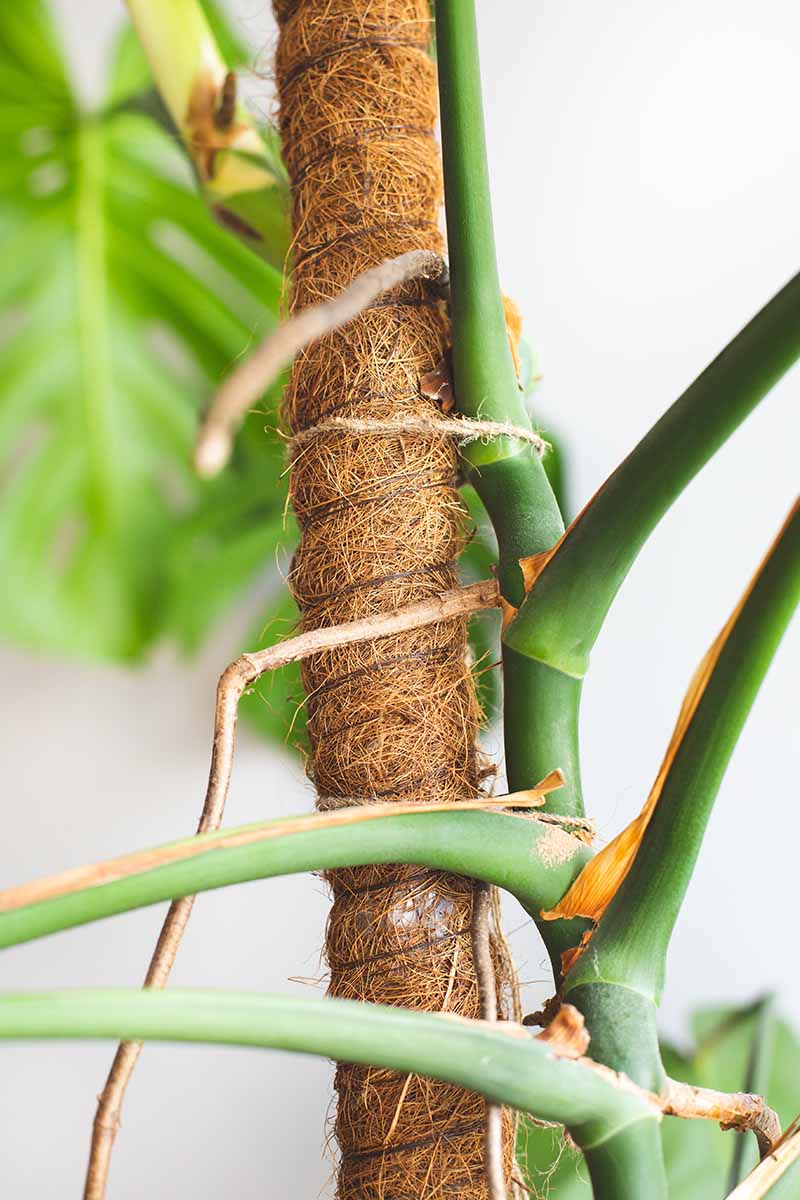
You’ll need a stick or pole, some sphagnum moss, and thin wire or fishing line. I’ve always used thick branches collected from my yard to make mine, but it’s worth mentioning that these will of course decompose over time.
You can also use PVC pipe, wooden dowels, or even metal pipe.
To choose the best size, keep the current as well as the eventual size of your specimen in mind. You can always upgrade the size as your plant grows – but it’s a pain in the you-know-what.
It’s going to be a lot easier to pick something larger than what you need currently so you can keep it in place.
The depth and height are more important than the diameter of the pole. The pole should extend at least a few inches taller than your plant, or you can pick something about the size of average mature height.
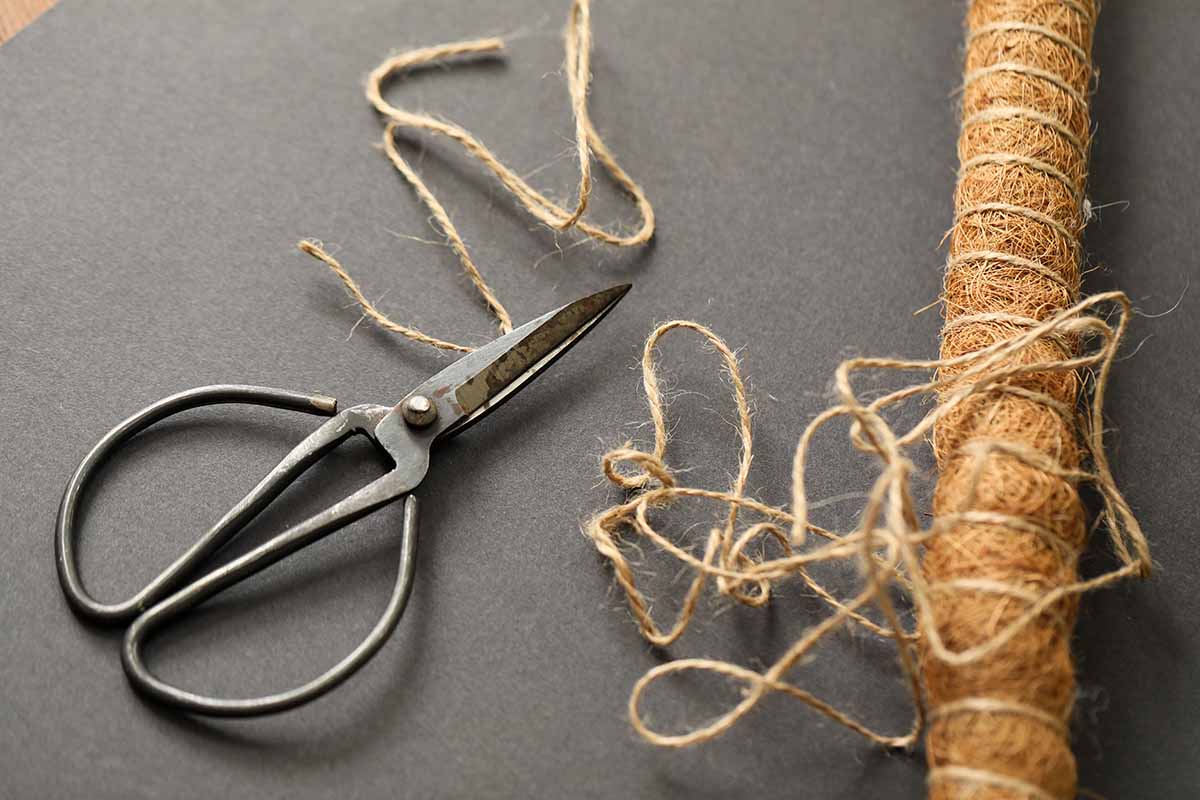
You’ll want to insert about a quarter of the total length of the pole in the substrate as well, so be sure to include that and make your calculations accordingly.
Soak your moss in water for 10 minutes or so and then wring it out well.
Starting at least six inches up from the base, wrap a handful of moss around the pole and secure it in place with some wire or fishing line. Keep working your way up the pole, attaching the moss and securing it as you go.
You want at least a half-inch thickness of moss all the way around, but a thicker layer is even better. You want the roots to be able to anchor in there really well.
Attach Your Plant
Whether you buy or make your pole, the process is the same for attaching your plant.
Insert the pole as close to the central stem as you can. Following our guidelines above, a two-foot pole needs to be inserted at least six inches deep or that thing will topple over as your monstera grows upwards.
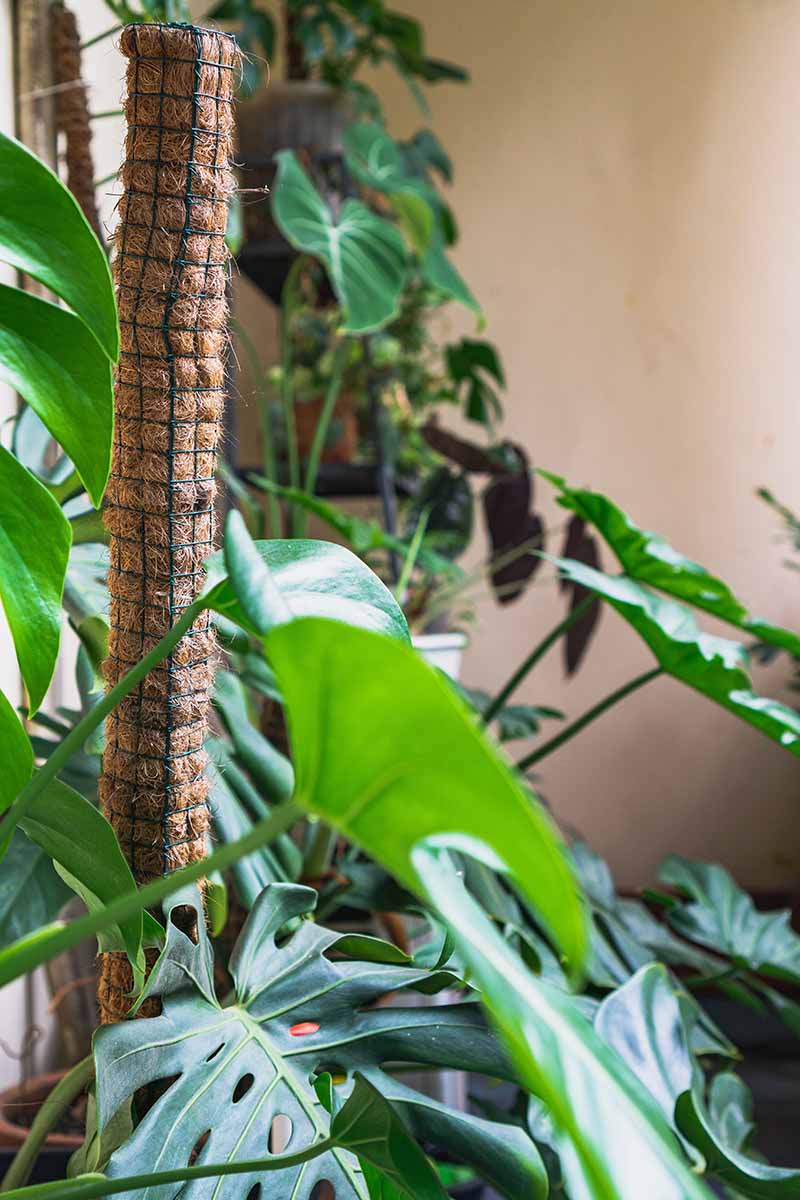
If your monstera is a tiny specimen in a little plastic pot, you probably don’t need a moss pole just yet.
Putting one in place so it’s ready when you need it may sound like a good idea, but remember that you don’t want to tip the pot over, and you may run into needing a necessary size upgrade later.
While we’re discussing sturdiness, don’t forget that you need a pretty substantial pot to begin with if you plan to train your monstera to grow upwards.
If it’s weeping over the sides of the pot, you don’t need quite as much weight at the bottom.
But once you’re growing taller, weight at the bottom is necessary to balance the weight of the added height. A lightweight plastic pot is going to tip right over the first time someone bumps it.
Choose clay or concrete just to be safe if you have a large plant.
I’m also a big fan of the kind of container stands that provide support to the side of the pot, like this one by Mkono that’s available on Amazon. Plus, they just look cool, right?

Secure the specimen to the pole by gently tucking the aerial roots into the moss covering the support, and securing the leaves with garden tape or twine.
Don’t use fishing line or wire as it will cut into the flesh of the stem.
If you find the moss to be too compacted, you can moisten it to help plump it up, or just wait and attach the aerial roots to the twine and skip tucking it into the moss.
You can attach the petioles of the leaves if you need to, but it’s better to attach them at the internodes.
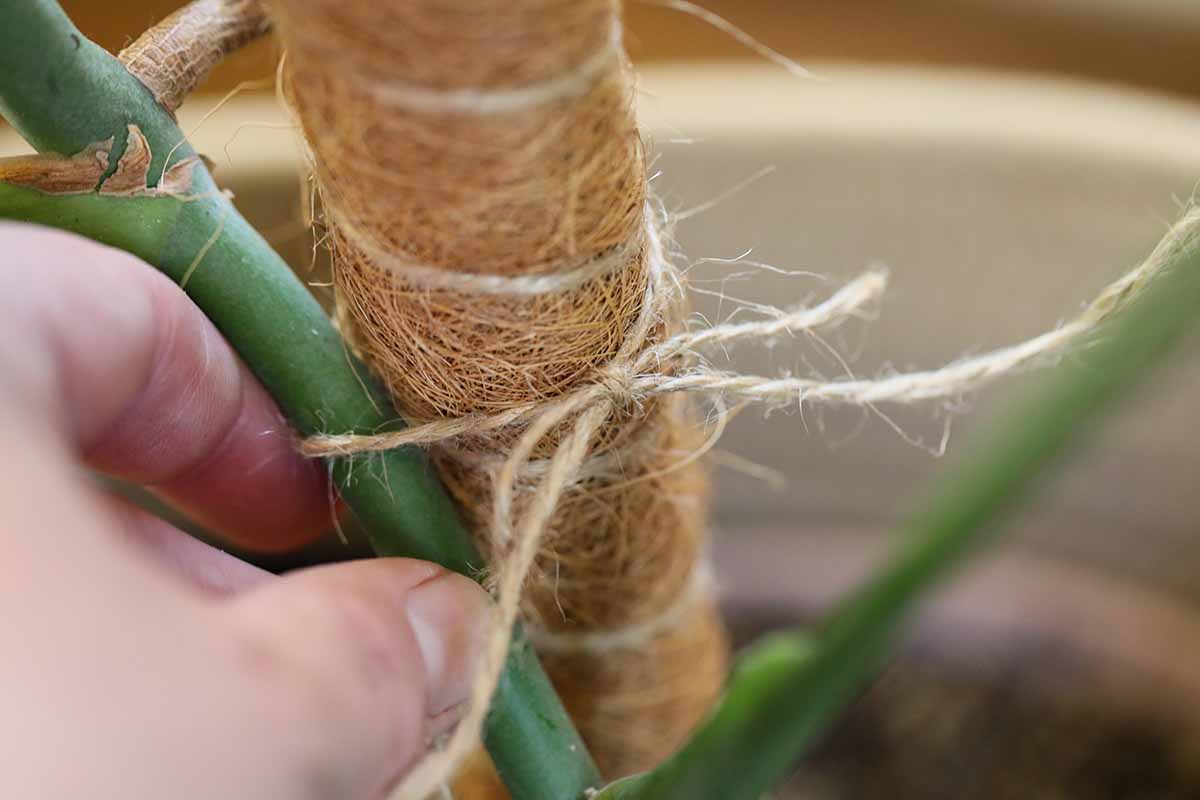
The petiole is the stem that extends from the leaf and attaches to the stem. The internodes are the parts of the stem between the leaves.
As the plant grows, you can help it out by attaching new growth to the support. Those aerial roots might do some gripping of their own, but you’ll probably need to give them an assist periodically.
Maintenance
If you let the sphagnum moss get too dry it will be difficult to plump it back up. Plus, dry moss means the aerial roots are drying out too.

Since aerial roots just provide supplemental water, it isn’t the end of the world, but we always want to try to make our plants as happy as possible, right?
Dryness won’t kill your Swiss cheese plant, but it’s healthier for the roots if you keep the moss moist without oversaturating it.
Either drip water down the length of the support from the top or spritz it with a spray bottle when it starts to feel dry to the touch.
If, for some reason, you need to remove your plant from the pole, carefully remove any twine or tape and then cut off the aerial roots that are feeding into the moss.
These should be cut off completely as close to the stem as possible. Your plant’s growth will likely be stunted for a time, but it should recover.
Level Up Your Monsteras
It’s a sign of success if you need to give your Swiss cheese plant a moss pole to climb up on. It means that it has grown large enough that it needs something to support all that luscious growth. Nice work!
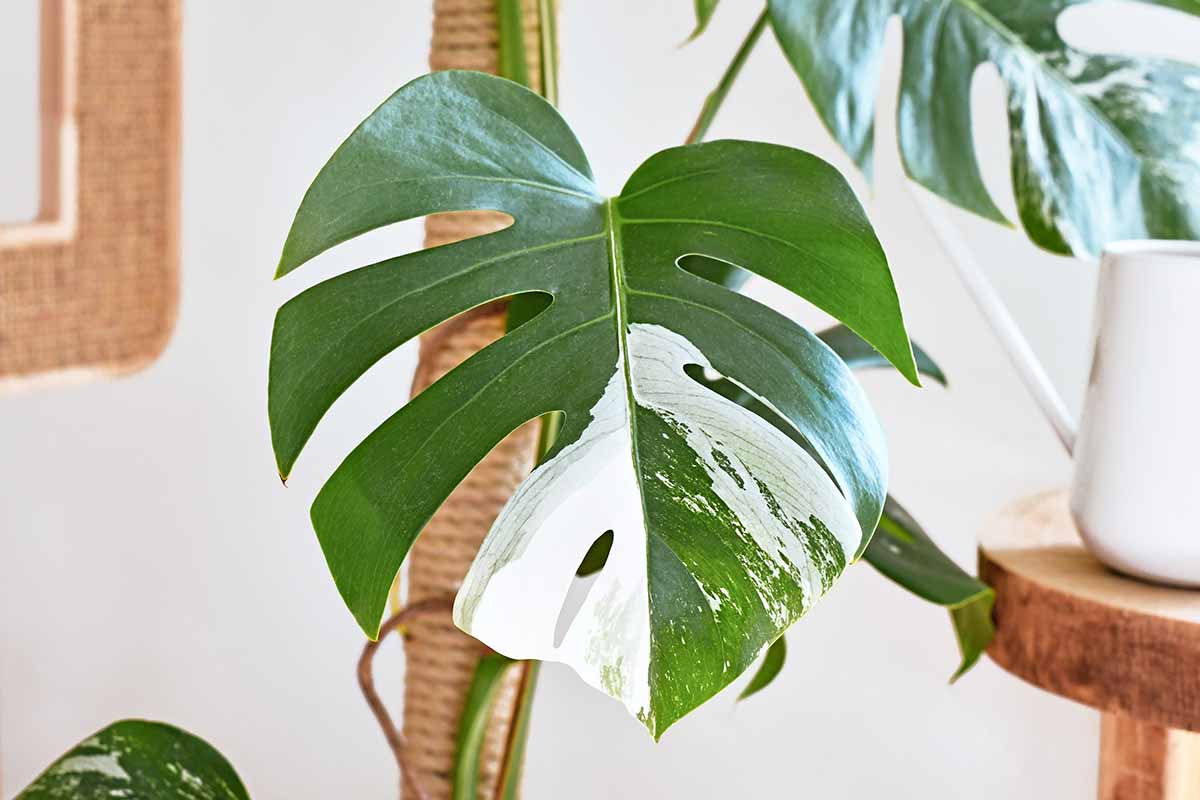
These houseplant gardening tools aren’t as common as, say, bamboo poles. But as more and more indoor gardeners learn how to make epiphytes thrive, they’re popping up in more homes.
That’s excellent because they make your specimen not only look better, but grow healthier as well. They improve air circulation, make use of aerial roots, and put your plant in a more natural position.
How long have you been growing your Swiss cheese plant? Did you opt to add a pole from the start, or did you find you wanted to add one as your plant grew big and luscious? Tell us all about it in the comment section, and don’t forget to share your photos!
And for more information about growing and caring for monstera, check out these guides next:
